Buildings Etc.
Tōkyō is a mixture of commercial, residential and light industrial structures, often intermingled.
Residential and Multi-Use Buildings
Away from the major streets and the commercial districts, much of Tōkyō is populated with smaller buildings, typically only two or three stories in height, and often mixing ground-level businesses with upper-level residences.
Shops
The ground floor of many buildings often has a retail nature, with office space or a residence on upper floors.
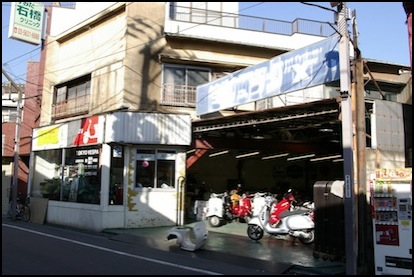
A Vespa shop and residence (2007)
Location: Sumida, Tōkyō; Photographer: pictureTYO
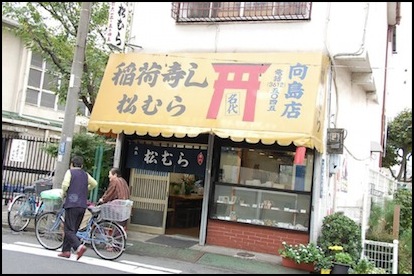
Small shop (2008)
Location: Sumida, Tōkyō; Photographer: iwaryo
The photo below provided an interior for my bike shop model, with the front window and its displays plus the bikes behind it being used on the back wall (you can’t really tell it is a window at the size it ends up reproduced at).
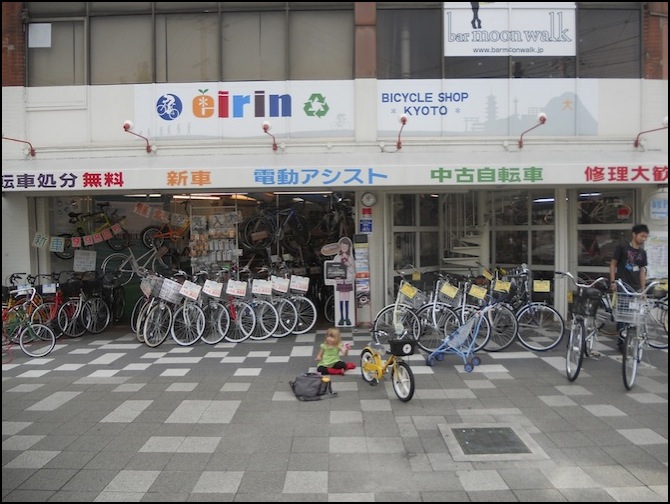
Bike Shop (2010)
Location: Kyoto; Photographer: Don Goodman-Wilson
Image copyright, used by permission.
Residential and Multi-Use Buildings
Some buildings are more residential in nature, although they still won’t necessarily be exclusive to that function.
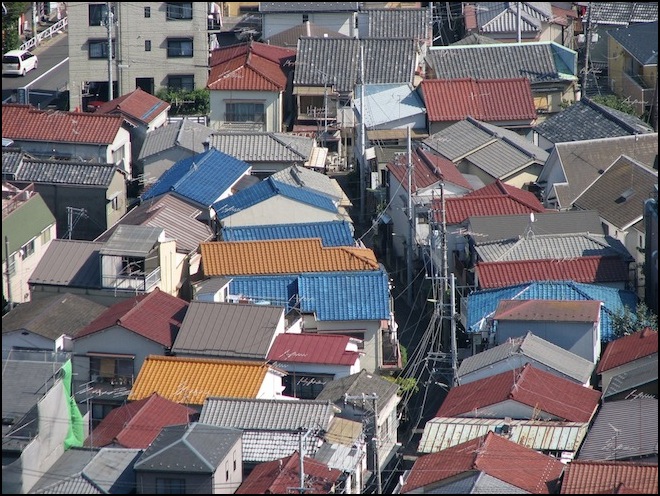
Backstreet Residences (2009)
Location: Sumida, Tōkyō; Photographer: pictureTYO
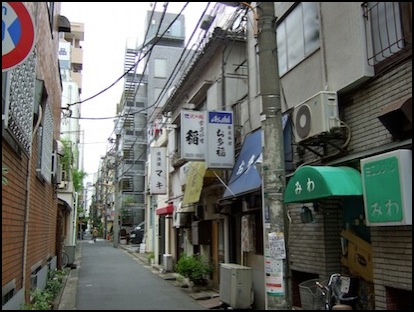
Side street (2010)
Location: Sumida, Tōkyō; Photographer: southtopia
Simple Residences
Not all buildings are mixed-use, some are simply small homes, and some of those even front on fairly large roads. The further out from the city you get, the more likely these are, but some can be found deep in the urban area.
The photo below is of a house on Kurumaebashi Dori (Avenue), also known as route 315, a fairly major (two lanes each way) east-west avenue through Sumida ward occupied largely by 3-6 story commercial buildings.
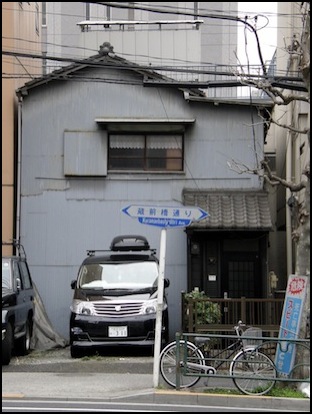
Small House on Kuramaebashi Ave. (2008)
Location: Sumida, Tōkyō; Photographer: Nemo’s great uncle
Commercial Buildings
Commercial buildings can be purpose-built structures (like gas stations), ordinary single or multi-structure office buildings, or light industrial buildings. Often buildings are multi-use due to the high cost of urban land, and you’ll find gas stations with a second floor of office space, or residences above shops or other purposes on the ground level.
Office Buildings
Many of the large streets are filled with small office buildings, typically of three to six stories although there are taller (and smaller) ones as well. The larger commercial districts build up to much greater heights, particularly along major avenues.
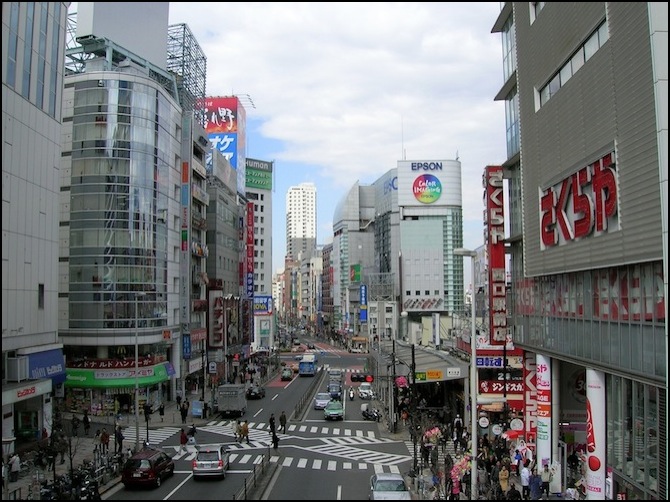
Shinjuku (2006)
Location: Shinjuku, Tōkyō; Photographer: andres_colmen
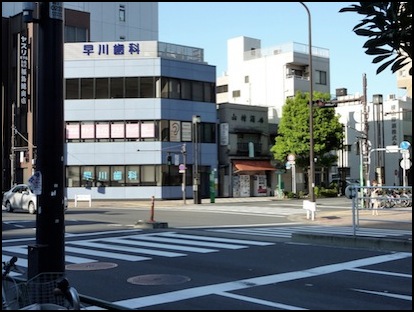
Three-story Office Building (2009)
Location: Sumida, Tōkyō; Photographer: libertysketch
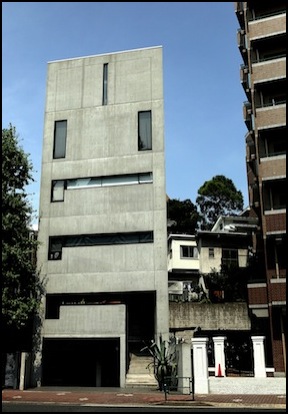
Concrete Office Building (2010)
Location: Ebisu, Tōkyō; Photographer: Aaron Webb
Gas Stations
Gas stations look much like those in the U.S., until you look at the details. While many of them have the same roofed front area with pumps, and a small convenience-store section, others have roof-mounted pumps (which can fit more pumps in the same space), and most have service bays for repair work (something that’s pretty rare these days, particularly in urban areas).
The brand names are both recognizable (Shell is particularly common, at least in the stations I found using Google maps and street-view, although I also saw a few Mobil stations and one Esso) and local (Eneos, Jomo, Cosmo).
Another common feature is the car wash, but rather than a building you drive through, it’s an inverted U-shaped frame that moves over a parked car on tracks.
Uniformed attendants are also common (although a small number of stations are self-serve).
And in many cases, the station is a multi-storey building, with apartments or other uses for the upper floors.
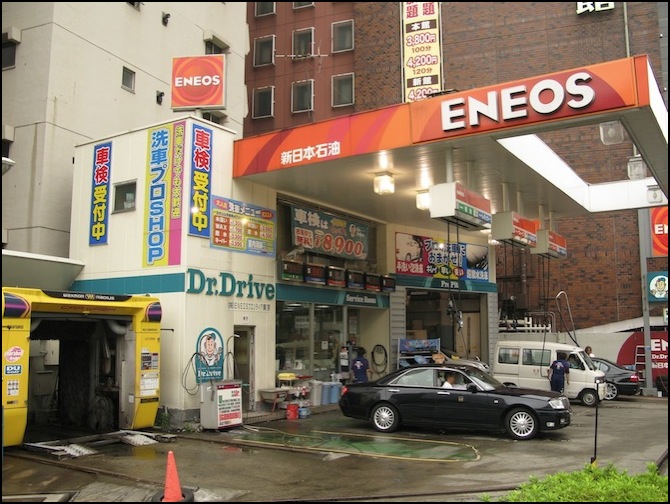
A compact station with six roof-mounted pumps, a carwash and a service bay (2007)
Location: Tōkyō; Photographer: grenade
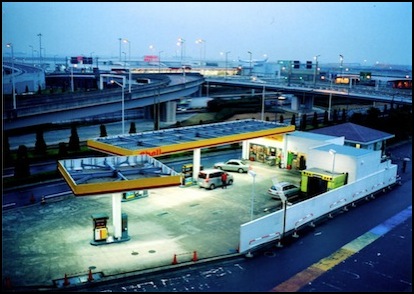
Shell station with ground-level pumps, and yellow car wash on right (2007)
Location: Haneda Airport, Tōkyō; Photographer: kina3
I couldn’t find a CC-licensed photo of a Mobil station in Tōkyō, although they’re all over the place, so I included this one from Osaka. It’s representative of the small one-story gas stations that do exist there.
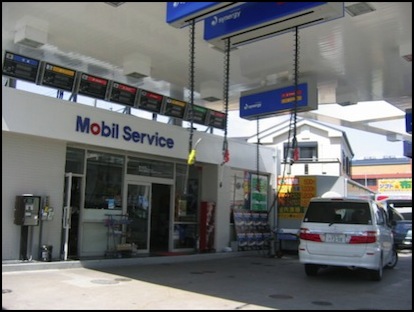
Mobil station with a familiar look, except for the pumps (2004)
Location: Osaka; Photographer: situationniste
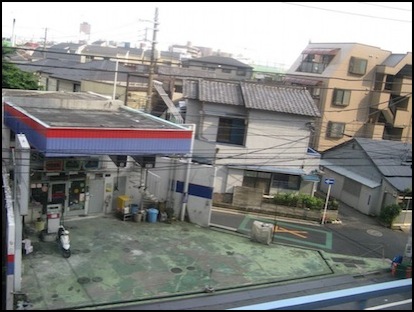
A very small station, but still with four pumps. Note spiral stairs on right to second floor (2008)
Location: Tōkyō; Photographer: oceandesetoiles
Parking
Parking in a city is always a problem, but Tōkyō takes this to extremes. On-street parking is legal on many side streets, as long as 3.5 meters (11.5 feet) are left clear for other vehicles to pass (it would appear that in practice much less is often left clear). Metered parking exists, as do for-pay parking lots and garages. Some buildings have internal or rooftop parking. But most interesting are the creative solutions to packing a large number of cars into a very small space.
Garages with lifts are fairly common, and the one shown below is typical of many (although not all have a roof above the upper level). Each module can hold eight cars, and modules can be arranged end-to-end or side-by-side (or both).
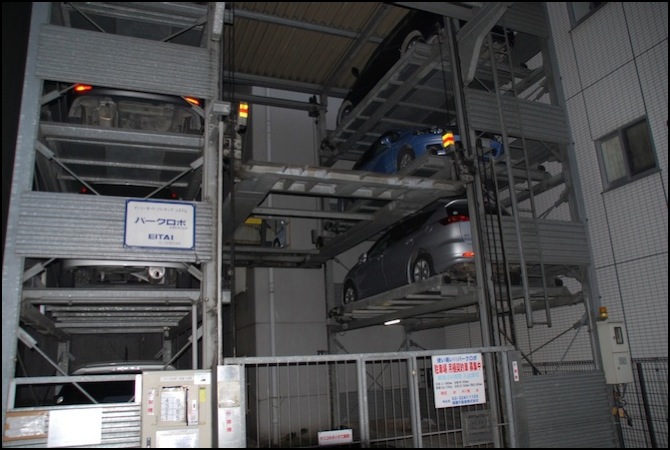
A small outdoor garage next to a residence or office (2010)
Location: Kanda Tsukasamachi, Tōkyō; Photographer: the jens
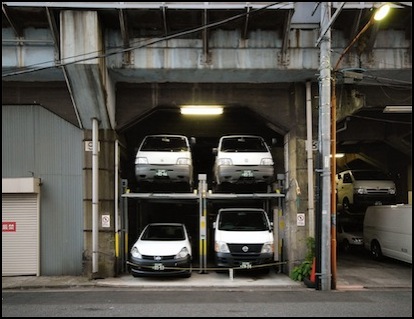
Parking under the Sōbu Line viaduct near Ryogoku station (2008)
Location: Sumida, Tōkyō; Photographer: Ken OHYAMA
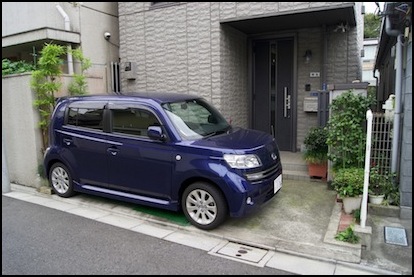
Typical Residential parking space near Ueno, Tōkyō (2011)
Location: Nezu, Tōkyō; Photographer: dmeurer
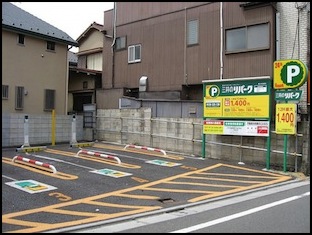
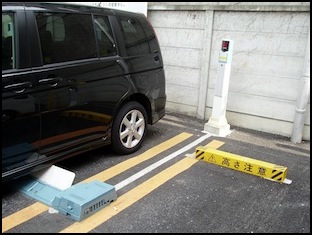
Self-serve Parking Lot (2007) and Locking Device (2005)
Location: unknown Tōkyō and Setagaya, Tōkyō; Photographers: Mike Lee and Nemo's great uncle
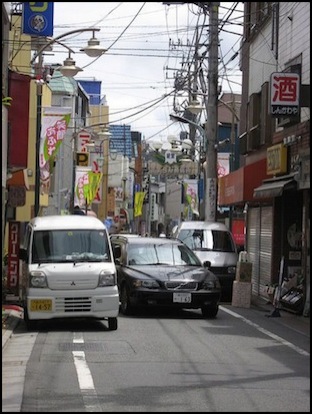
Narrow street with two parked cars (2007)
Location: unknown Tokyo; Photographer: Mike Lee




